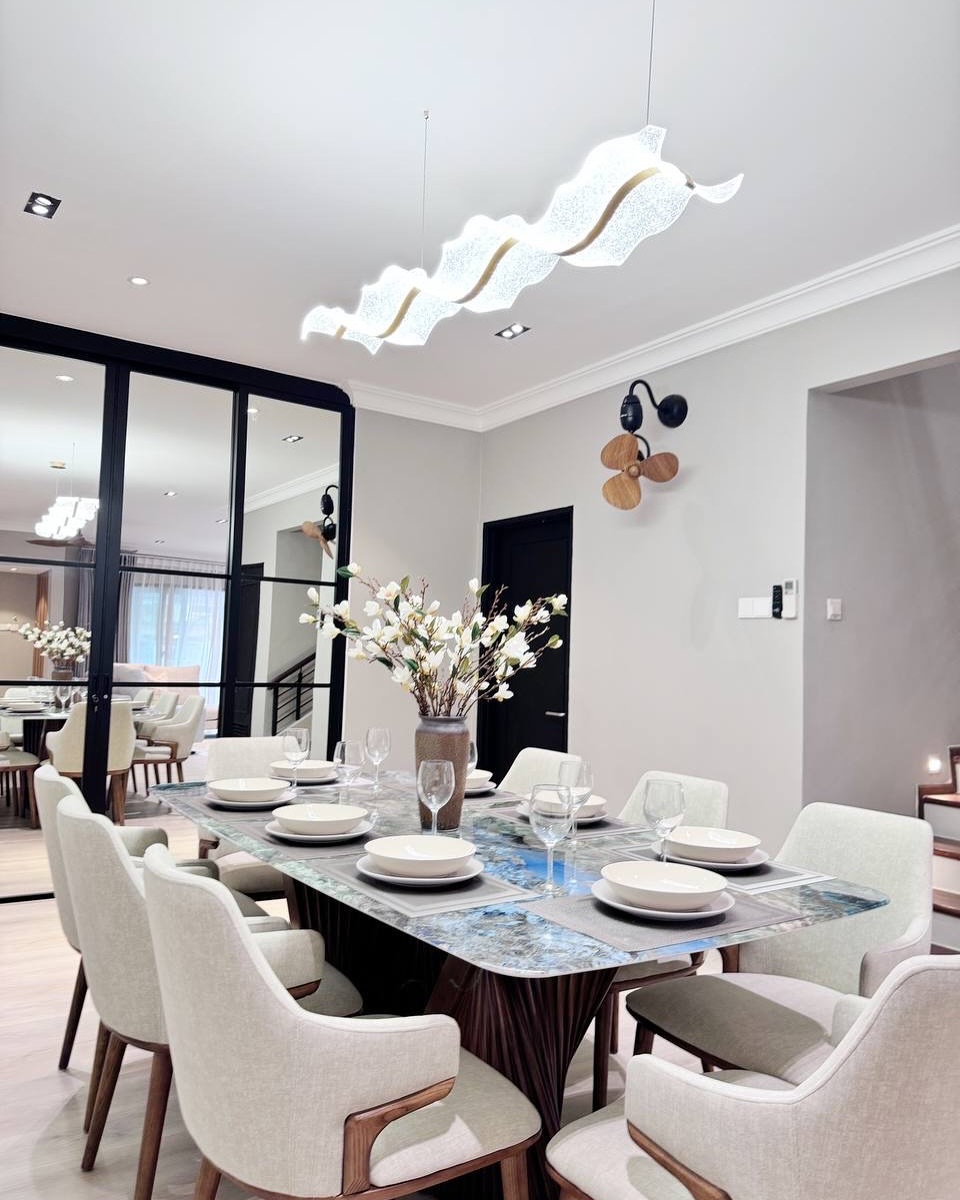Lighting is an essential yet often overlooked aspect of interior design. It transforms spaces, sets the mood, and enhances functionality. Achieving the perfect balance of lighting involves more than simply installing fixtures; it is a sophisticated art that blends creativity, technical expertise, and a deep understanding of spatial dynamics. In this blog, we explore the nuances of lighting design and how it elevates the aesthetic and functional value of a space.
Why Lighting Matters in Interior Design
Lighting is more than a tool for visibility—it influences the perception of colors, textures, and dimensions in a room. Here’s why it’s indispensable:
1. Mood Creation: Proper lighting can create warm, inviting spaces or bright, energetic environments.
2. Functionality: Adequate lighting enhances usability, especially in task-oriented areas like kitchens and offices.
3. Aesthetic Appeal: It highlights focal points, artwork, and architectural features, adding depth and drama to a design.
Types of Lighting in Interior Design
Mastering lighting begins with understanding its three primary types:
1. Ambient Lighting
This is the foundational layer of lighting, providing overall illumination. It ensures the space feels open and welcoming. Think recessed lighting, chandeliers, or well-placed ceiling fixtures.
2. Task Lighting
Essential for workspaces, task lighting is functional and focused. Examples include under-cabinet lighting in kitchens or desk lamps in offices.
3. Accent Lighting
Used for drama and emphasis, accent lighting highlights key features, such as a textured wall, an art piece, or a decorative element.
Balancing Natural and Artificial Lighting
A truly luxurious space harmoniously integrates natural and artificial lighting.
Natural Light: Maximizing natural light involves strategic window placements, use of skylights, and light-enhancing elements like mirrors and sheer curtains. Natural light not only reduces energy consumption but also improves mental well-being.
Artificial Light: For evening hours or darker spaces, artificial lighting fills the gaps. LED lighting is ideal for its energy efficiency and adaptability in terms of warmth and brightness.
Advanced Lighting Techniques
To achieve high-end lighting design, consider the following sophisticated techniques:
1. Layered Lighting
Combine ambient, task, and accent lighting to create depth and versatility. A dimmable ceiling light paired with under-cabinet LEDs and a statement pendant light can transform a kitchen from functional to luxurious.
2. Smart Lighting Systems
Incorporating technology like smart bulbs and automated systems allows for customizable lighting settings. Adjust brightness and color temperature with ease, creating perfect ambiance at any time of day.
3. Lighting Zones
Divide spaces into zones with specific lighting needs. For example, in a living room, use soft, warm lighting near seating areas and brighter lights for reading corners.
Common Mistakes to Avoid
1. Over-Illuminating or Under-Illuminating
Too much light can make a room feel sterile, while too little can make it impractical. Balance is key.
2. Ignoring Color Temperature
Choose the right temperature for the room’s purpose. Warm tones are ideal for relaxation areas, while cooler tones suit workspaces.
3. Neglecting Light Placement
Improperly placed lighting can cast unflattering shadows or fail to highlight key areas.
The Role of Lighting in Luxury Spaces
High-end interiors often use lighting to evoke opulence and sophistication. Statement fixtures, bespoke designs, and precision lighting techniques are integral to creating a sense of grandeur.
For example, a luxury dining room might feature a crystal chandelier as the centerpiece, paired with recessed LED strips to softly illuminate the surrounding walls.
Sustainable Lighting Practices
Eco-conscious design is on the rise, and sustainable lighting plays a critical role:
Use energy-efficient LEDs that last longer and consume less energy.
Incorporate motion sensors in low-traffic areas to save electricity.
Opt for fixtures made from recycled materials for an eco-luxury approach.
Final Thoughts
Lighting is the unsung hero of interior design. Its ability to transform spaces, enhance functionality, and create mood makes it a vital aspect of any design project. By mastering the art of enough lighting, designers can craft spaces that are as functional as they are breathtaking.
At Madola Interiors, we specialize in integrating sophisticated lighting solutions into our designs, ensuring every space reflects its purpose and beauty.
Ready to transform your interiors with the perfect lighting? Contact Madola Interiors today to bring your vision to life.
